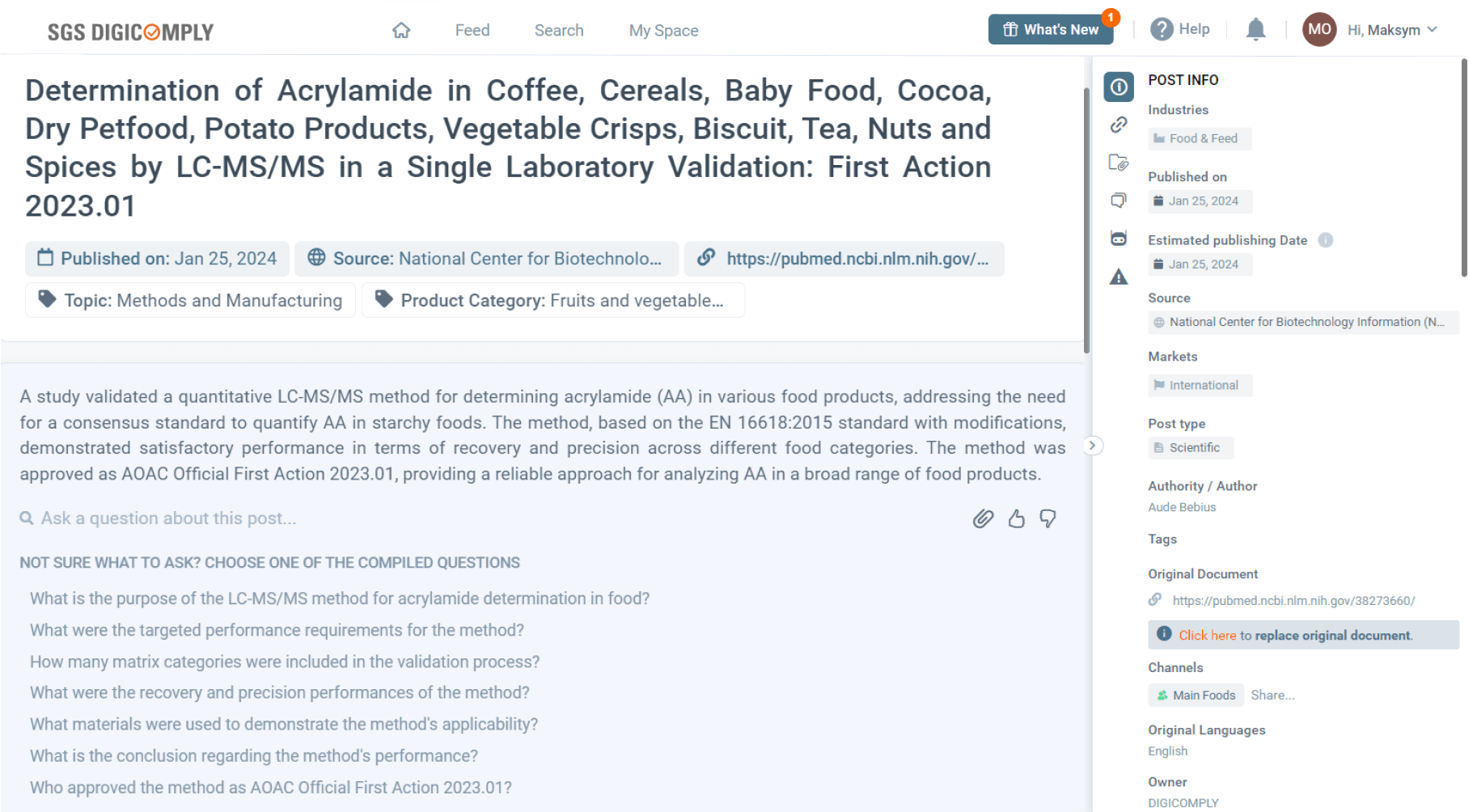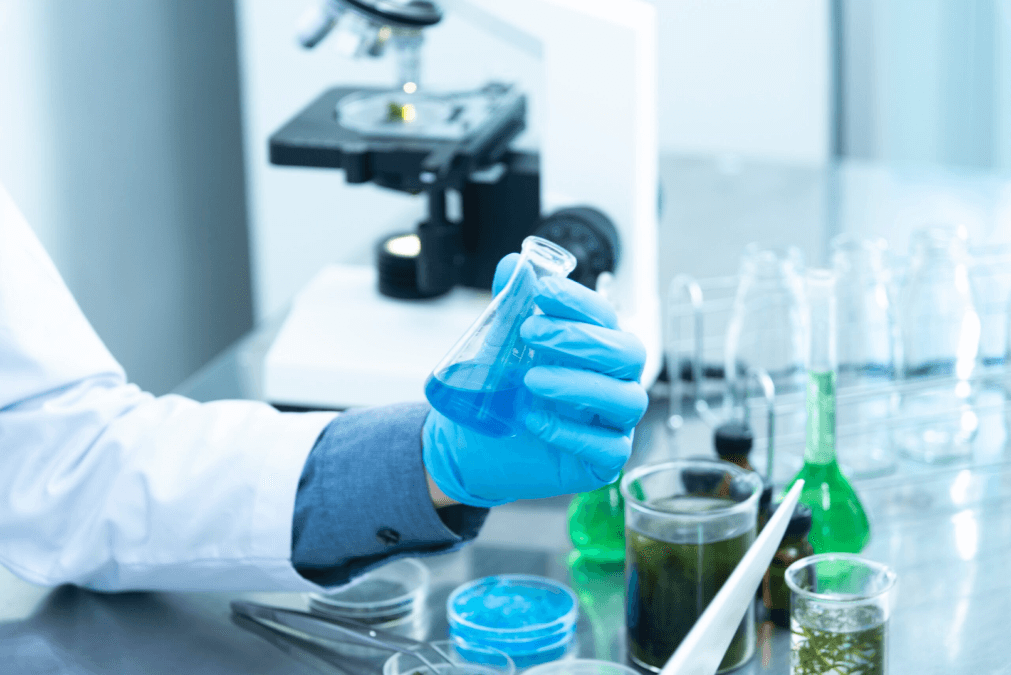In the realm of food safety and regulatory compliance, staying ahead of emerging risks and technological advancements is essential. Recently, SGS Digicomply's Horizon Scanning module uncovered an important development: a novel method for detecting acrylamide in food products. This method, detailed in the scientific paper "Determination of Acrylamide in Coffee, Cereals, Baby Food, Cocoa, Dry Petfood, Potato Products, Vegetable Crisps, Biscuit, Tea, Nuts, and Spices by LC-MS/MS in a Single Laboratory Validation: First Action 2023.01," marks a significant advancement in food safety practices. Let's explore the implications of this discovery for the future of food safety and regulatory compliance.
Feel free to get in touch now to learn about implementing the Horizon Scanning for your company.
Acrylamide Detection in Various Food Products: Validation of LC-MS/MS Method
In a recent study titled "Determination of Acrylamide in Coffee, Cereals, Baby Food, Cocoa, Dry Petfood, Potato Products, Vegetable Crisps, Biscuit, Tea, Nuts and Spices by LC-MS/MS in a Single Laboratory Validation: First Action 2023.01," researchers unveiled a validated quantitative LC-MS/MS method for detecting acrylamide (AA) in a wide array of food products. The study, a collaborative effort addressing the necessity for a standardized approach to quantify AA in starchy foods, showcased the method's robustness across diverse food categories, earning it the esteemed approval as AOAC Official First Action 2023.01.
Context and Objective
Acrylamide (AA) poses a significant health concern as a process contaminant formed naturally during the high-temperature cooking of starchy foods. Recognizing the inherent risks of misquantification in AA analysis, the study emerged from an AOAC initiative to establish a consensus standard for its determination across various food types.
Methodology
Building upon the EN 16618:2015 standard with modifications, the proposed method underwent enhancements in sample preparation, scope of application, and LC conditions. Confirmatory AA detection was achieved via LC-MS/MS in the Selected Reaction Monitoring mode (SRM), with isotopic dilution using labeled internal standards such as 2,3,3-d3-acrylamide (d3-AA) or 13C3-2,3,3-d3-acrylamide (13C3-d3-AA).
Key Findings
The validation process encompassed 16 laboratory samples across 9 matrix categories, demonstrating exceptional performance in terms of recovery (97-108%) and precision (RSDr and RSDiR < 12%). Extensive validation in diverse food products, including coffee, infant cereal, cocoa powder, pet food, tea, spices, and nuts, underscored the method's broad applicability and reliability.
Conclusion
The study's findings align closely with the acceptance criteria outlined in SMPR 2022.06, reinforcing the method's accuracy and suitability for AA analysis in food products. Esteemed approval from the Expert Review Panel for acrylamide signifies the method's accreditation as AOAC Official First Action 2023.01, marking a significant milestone in the realm of food safety and regulatory compliance.
Leveraging Laboratory Expertise in Acrylamide Testing
With the introduction of the novel LC-MS/MS method for detecting acrylamide in a wide range of food products, it is crucial for food manufacturers and suppliers to ensure their products meet the stringent safety standards set forth by regulatory bodies. SGS laboratories are at the forefront of implementing cutting-edge testing methodologies, including this latest advancement for acrylamide detection. SGS comprehensive Food Testing services include rigorous testing for acrylamide, among other critical food safety parameters, utilizing state-of-the-art technology and methods validated by the AOAC and other regulatory authorities. By partnering with SGS, companies can navigate the complexities of food safety and regulatory compliance with confidence, ensuring their products not only meet but exceed the expectations for safety and quality.





.webp?width=1644&height=1254&name=Food%20Safety%20Dashboard%201%20(1).webp)
